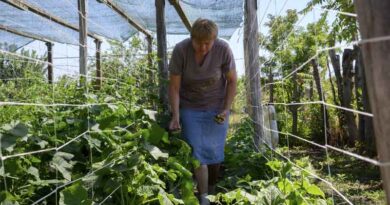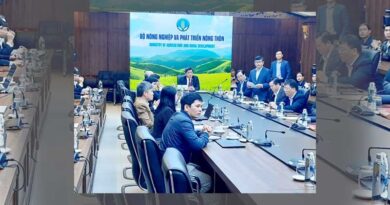Asia-Pacific countries urged to rapidly transform agrifood systems as hopes fade for achieving the Sustainable Development Goals by 2030
06 October 2022, Bangkok: At a symposium convened by the Food and Agriculture Organization of the United Nations (FAO) on agrifood systems transformation in Asia-Pacific, governments, the private sector and other stakeholders are being urged to massively accelerate transformation of their agrifood systems, or risk worsening malnutrition and environmental degradation in the world’s most populous region.
Rising food prices, floods, drought, water scarcity, increasing climate-related disasters, the global pandemic and conflicts, are driving food insecurity across the region. These challenges directly impact the most vulnerable people, including smallholder farmers, others depending on the land for their livelihoods and millions of urban poor.
Changes in rainfall patterns, crucial for agriculture in the monsoon region and in the frequencies and timings of pest and disease outbreaks have combined to lower yields. Asia and the Pacific already experiences 60 percent of global fatalities and 40 percent of economic losses due to multiple hazards and risks.
In summary, the region’s complex agrifood systems are under enormous strain.
Asia-Pacific region first out of the gate following UN Food Systems Summit
Last year, caught in the grip of a global pandemic, world leaders pledged to transform their agrifood systems to make them more efficient, inclusive, resilient and sustainable.
Speaking at the beginning of a three-day Asia-Pacific symposium, the world’s first since the UN Food Systems Summit, which aims to fast-track agrifood systems transformation in this vast region, FAO’s Director-General, QU Dongyu, said the region’s transformation needs to focus on outcomes that result in better production, better nutrition, a better environment, and a better life for all – ensuring no one is left behind.
FAO has mapped out four priority areas in which acceleration is needed:
1. Providing immediate support to the vulnerable through social protection systems, especially in rural areas and among vulnerable groups;
2. Boosting agricultural production by ensuring that family farmers have affordable access to seeds and fertilizers, working capital and technical assistance, and links to markets;
3. Facilitating trade in agricultural products and inputs to prevent further disruptions to food production; and
4. Investing in climate-resilient agriculture to address and reverse the effects of the climate crisis.
The Director-General warned that the SDG’s would not be achievable unless there is a collective will to defeat hunger, as a priority, in a post-pandemic region.
Ongoing crises, including the impacts of COVID-19, the climate crisis, droughts and floods, conflicts and war have disrupted the world’s supply of grains and other essential commodities, Qu noted. The result is “economic downturns and loss of jobs that pushed undernourishment from 8% to almost 10% during the first year of the pandemic, with the number of undernourished that has now grown by 150 million. The majority of this increase is in Asia and the Pacific, accounting for nearly 85 million more people in hunger, as well as in Africa and Latin America,” the FAO Director-General said. “To achieve the SDGs we need a major transformation – one that begins with the transformation of our agrifood systems to ensure they can meet the present and future needs of all stakeholders and consumers.”
Asia-Pacific region dangerously backsliding on SDGs
According to the recent UN 2022 Asia and the Pacific Sustainable Development Goals Progress Report the region is so off course, it would need until 2065 to achieve all 17 Sustainable Development Goals – a delay of 35 years.
The recent disruption to supply chains, lives and livelihoods has come together to produce a crisis of five ‘Fs’ – lack of food, feed, fuel, fertilizer and finance, and a prediction that there could be reductions in cereal output next year due to fertilizer shortages in some countries in the region.
However, the backsliding predates even the pandemic, with successive annual editions of FAO’s flagship publication, the State of Food Security and Nutrition warning the fight against hunger and malnutrition was failing in this region. In 2021, more than 400 million people in Asia-Pacific were malnourished, most of them in South Asia, with 40 percent of all inhabitants unable to afford a healthy diet.
In Asia and the Pacific, now is the time to accelerate the agrifood systems transformation – to leave no one behind
More than 80 percent of the world’s smallholders and family farmers live off the land in this Asia-Pacific region, and the Symposium was told their interests and livelihoods must be safeguarded by measures including social safety nets and reskilling programmes to improve employment prospects. FAO called for bold action by all stakeholders to transform the region’s agrifood systems, saying governments must provide leadership; the private sector must broaden its customer base to provide affordable solutions for smallholders; civil society must work more proactively with policymakers and the private sector; academia must accelerate research, while resource partners must make this transformation their top priority, with FAO committed to helping its Members and partners achieve these objectives.
Also Read: India signs deal with Dubai company to improve DAP and NPK supply
(For Latest Agriculture News & Updates, follow Krishak Jagat on Google News)















